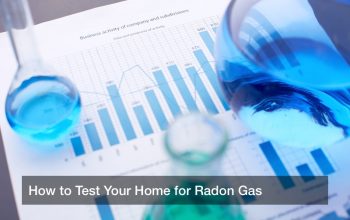

Radon is a colorless and odorless gas that deserves the name of the silent killer. When it occurs in homes at concentrations above the danger level, it is a serious health hazard. Thousands of long cancer deaths have been linked to radon. Radon abatement can reduce radon concentrations in homes to safe levels, eliminating the health risks.
What is radon?
Radon is a colorless, odorless, naturally-occurring radioactive gas. It can easily be inhaled and has harmful effects on human health. It has been identified as the second leading cause of lung cancer deaths in the U.S. by the Surgeon General. According to the U.S. Environmental Protection Agency (US EPA) and the Surgeon General’s Office, radon causes 20,000 lung cancer deaths each year.
Radon is a dense, inert gas that finds its way into homes through basements, crawl spaces, cracks and even the water supply. Because it is so heavy, it does not disperse, but accumulates in buildings. Radon abatement can eliminate the health risks. It is estimated that about 5,000, or 2 to 4% of lung cancer deaths each year could be prevented by reducing radon levels in homes to below the EPA?s action level.
What is the danger level for radon?
According to the EPA, the action level for radon exposure is a concentration of 4 pCi/L. According to EPA estimates, one home out of fifteen is at or above the danger level. Following testing in seven states and three Native American lands, one out of three homes were discovered to be above the danger level.
There is no geographical or other pattern to radon exposure, which can occur anywhere in the U.S. Newer homes are as susceptible as older homes, and the only way to find out if your home is safe is to have it tested for radon exposure.
What can be done about it?
The first step is to get your home tested for radon. Radon testing can be short or long term. Short term residential radon testing can last from 2 to 90 days, while long term testing takes more than 90 days. There are several methods of radon mitigation, such as venting and vapor barriers.
Radon mitigation services can reduce the level of indoor concentrations by 50% using passive systems. Adding radon ventilation fans can lower radon levels even further.
Radon abatement can eliminate the heath risks from indoor concentrations of this deadly gas. Many states and cities are now making radon inspections a requirement for home sales. Contacting a residential radon testing service is the first step to making sure that your home is free of this invisible danger.
